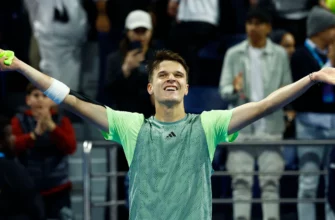In the world of professional kickboxing, the roar of the crowd often follows the thunder of the heavyweights. But what happens when that singular focus begins to overshadow the very foundations of the sport, leaving champions sidelined and rising stars questioning their path? A growing chorus of voices from inside the fight community suggests that a strategic obsession with the big men is costing promotions more than they realize.
The Allure of the Giants
There`s an undeniable draw to heavyweight combat. The sheer power, the potential for one-punch knockouts, and the larger-than-life personalities often define the pinnacle of fighting entertainment. Major promotions, captivated by this spectacle, have increasingly channeled resources and event slots into marquee heavyweight tournaments, promising lucrative payouts and a direct path to superstardom – or at least, a fight with the reigning king.
The logic is simple on paper: give the fans what they want. High-profile heavyweights, often veterans with established fan bases, guarantee viewership and buzz. But this strategy, while offering short-term gains, appears to be creating a rather significant, and perhaps entirely foreseeable, imbalance across the entire fight ecosystem.
The Unseen Casualties: Beyond the Heavyweight Horizon
While the heavyweights bask in the limelight, fighters in other divisions – the lightweights, welterweights, and middleweights – are finding themselves in an increasingly barren landscape. Imagine dedicating your life to a sport, honing your skills, and ascending to championship status, only to find the opportunities for consistent competition dwindling. It`s a frustrating reality that has led to a simmering discontent among the sport`s dedicated professionals.
Many multi-time champions and top-ranked contenders report a drastic reduction in fight offers. Their careers, once on a clear trajectory, are now placed on an indefinite pause. For professional athletes whose livelihoods depend on active competition, this stagnation isn`t just an inconvenience; it`s a financial and existential threat. “You train like a champion, but you get treated like an afterthought,” one veteran fighter reportedly lamented, capturing the essence of the growing disillusionment.
“Fighters themselves don’t dare to speak, but I’ll stand up for my boys. I don’t actually want to talk negatively, because [the promotion] is a great organization, but for now I’ll just have to be the scapegoat.”
The Exodus: A Bleeding of Talent
This neglect has tangible consequences. We`re witnessing an accelerating exodus of elite talent. Six-time lightweight champions are reportedly transitioning to Mixed Martial Arts (MMA), seeking more frequent and financially viable opportunities. Rising stars, once touted as the “next big thing” in kickboxing, are also turning their backs on promotions that fail to provide a clear path forward. The sentiment among these departing athletes is clear: if kickboxing won`t offer consistent engagement, another combat sport will.
Even those who remain within the heavyweight division are not immune to the wider implications. Coaches, often the unsung heroes of fighter development, are forced to advise their promising heavyweights to keep their options open, including cross-training in MMA. This isn`t just about winning a tournament; it`s about securing a sustainable career for athletes who are more than just punchers – they are comprehensive athletes with diverse skill sets.
A Promoter`s Dilemma or a Strategic Oversight?
When pressed on these concerns, promotional executives often acknowledge the heavyweight focus, asserting that opportunities for other divisions will “always exist” and that they are continually looking for “exciting fighters.” While the sentiment is understandable, it often falls short of addressing the core issue: the systemic lack of consistent scheduling and promotion for non-heavyweight bouts.
The belief that “spectacular fighters” will naturally find a way to be signed and kept busy sounds reassuring, but it overlooks the very human element of ambition, financial stability, and the need for a clear, predictable career trajectory. A fighter cannot simply *will* a fight into existence if the organizational structure isn`t there to support it.
The Future of the Kicking Game
The current trajectory poses a significant long-term risk to the sport of kickboxing. If promising young talent, dreaming of headlining major events, sees their idols in other divisions struggling for opportunities, that dream may fade. The foundation of any sport rests on a robust pipeline of new talent across all weight classes. Prioritizing one division at the expense of all others risks creating a top-heavy, unsustainable model.
Ultimately, the true “glory” in combat sports lies not just in a handful of colossal clashes but in a vibrant, diverse ecosystem where every champion, regardless of weight, has the chance to shine. For kickboxing to truly flourish, a strategic rebalancing act may be necessary to ensure that the pursuit of immediate spectacle doesn`t inadvertently sacrifice the sport`s enduring legacy.








